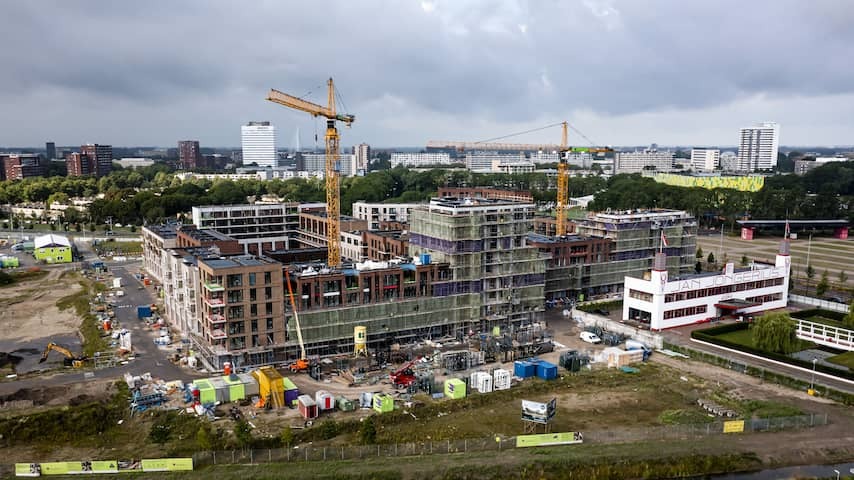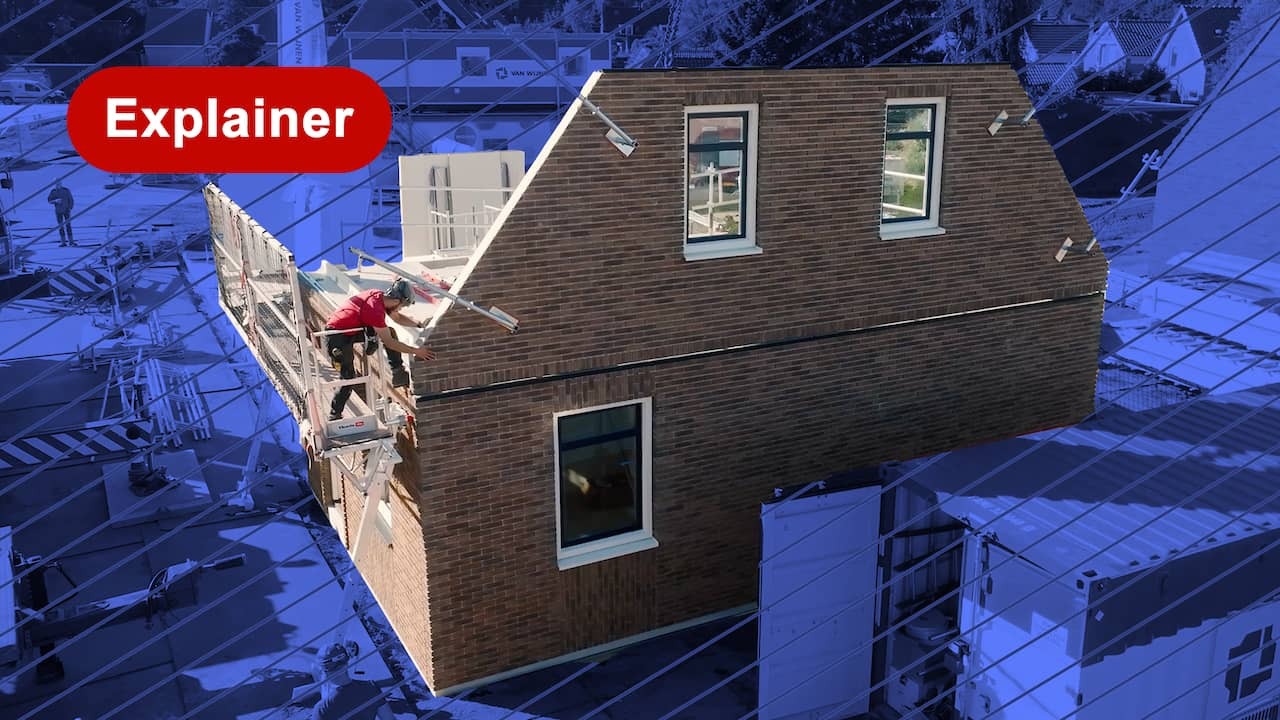
The housing construction is stagnating while the Netherlands needs 100,000 new homes annually. Many obstacles hinder construction companies, but what is the real problem? And is the fall of the cabinet, with large construction ambitions but few results, a problem or a solution?
“I was very happy when the cabinet fell, because the rent freeze was off the table,” says housing market professor Peter Boelhouwer of the TU Delft. “That rent freeze was also called a construction stop.”
Due to the freeze, housing corporations would have less rental income, which would reduce their ability to invest in new construction. About two hundred corporations wanted to go to court. When the cabinet fell, the plan disappeared immediately.
Even before the fall, Boelhouwer called the policy disastrous for construction. The cabinet would do nothing but postpone the problems, while construction needs solutions for the nitrogen problem, slow permit granting, high costs and personnel shortages.
These problems exacerbate each other, because nitrogen requirements and personnel shortages make permit granting more difficult. In 2024, 67,000 permits were granted, which is an indication of how much will be built in the coming years (although housing transformations are added to that). The construction slump would have already begun.
What makes the lack of new construction extra difficult is that the problems affect different parts of the construction industry. To build new residential areas, roads must be constructed. But the infrastructure sector is much more affected by the nitrogen rules, because a road quickly passes through an area where strict standards apply.
In an attempt to speed up construction in some locations, outgoing Minister of Housing Mona Keijzer last Thursday appointed 24 new ‘breakthrough locations’ where construction should be faster. At these locations, mostly in cities, “accelerated decision-making” would be possible.
With 50 people doing the work of 1,350 construction workers
According to Boelhouwer, the core of the problem is not space. “All kinds of inventories have been made and in principle we can build a million homes. But they are often difficult locations where many objections come.” Making an objection is also very easy. “It only costs a few tens of euros.”
For personnel shortages, Boelhouwer sees a good solution in housing factories. “Precisely in factories, fewer hands and less qualified personnel are needed.”
Van Wijnen is a construction company that has such a housing factory. In March, the company celebrated the seven hundredth home coming from the factory. Production has been ramped up since the beginning of 2023.
“If you industrialize, you’re talking about mass production,” says Van Wijnen’s CEO Peter Hutten. “Then you have to produce something that has mass. We saw that in the housing shortage in the affordable segment. The factory is now at three homes per day and will go to four. On an annual basis, we want to go to two thousand.”
Industrial building can be done with variation, Hutten emphasizes. “We make ordinary homes in the factory that look good for people looking for a house of 2.5 to 3 tons. With that, we think that within the required 100,000 homes per year, there is a market of about 60,000 for us.”
The process is automated and standardized, which helps to combat the personnel shortage. “There are 50 people working in the factory and they do the work of 1,350 construction workers,” says Hutten. “Industrial building also makes permit granting easier and the speed results in lower nitrogen emissions.”
 2:46
2:46
For 175,000 euros a new-build house: this housing factory makes it
That Keijzer is designating 24 breakthrough locations helps enormously, according to Hutten. “Focus is exactly what we need. Someone who says in which places it should happen. It’s striking how much this cabinet is doing now that it’s outgoing.”
Hutten mentions the rent freeze, the breakthrough locations and the recommendations of the STOER committee. STOER, short for Deleting contradictory and superfluous requirements and regulations, advised last week to skip the court in the event of objections and go straight to the Council of State. This could mean that new residential areas could be completed a year and a half earlier.
“It proves that in the future we will again need an administrative cabinet that provides perspective and has the power to execute.” But Hutten also thinks that the construction industry really needs to do something then. “I sometimes think we are a complaining sector. There is always something. While entrepreneurs should solve problems.”
Less high ambitions or more financial support
Boelhouwer also sees something in the introduction of breakthrough locations and the recommendations of STOER. “There are solid advices and construction plans, but politicians must dare to make choices,” he says. The professor sees two options: less high ambitions or more financial support.
“Of course we have to build circularly, of course we have to electrify, of course we have to meet the nitrogen requirements, of course we have to put up the best possible houses. But if we grant the requirements of all sectors, then the final picture is that it no longer happens.” But real choices are difficult for an outgoing cabinet.
Boelhouwer puts his hope in the new cabinet. “The most important thing is that there is a vision for the housing market in the future.”
As far as he is concerned, housing corporations must be enabled to earn enough money from renting, so that the construction of new rental homes is worthwhile again. “In five years they will reach their financial limits and then they will be finished.”
According to the professor, private investors must also be able to make a modest return on their rental homes. “Private investors are sometimes called slumlords. I would rather call them housing philanthropists.”